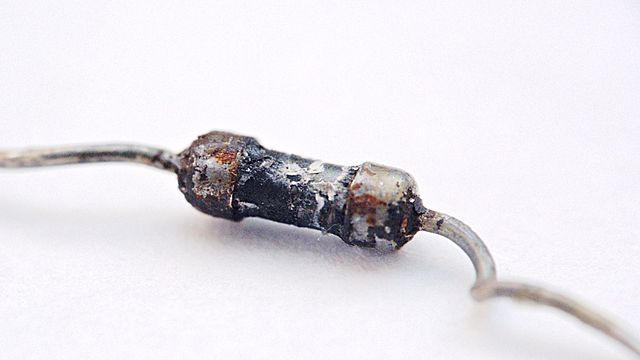The non-linear relationship between current and voltage is important but easy to understand.
In this section we explore the following topics.
IV curves
'Resistance' of an LED
Loadline resistance graphic tool
Variations in Vf and "binning"
Practical electronic circuits and theory for LEDs and power.
The non-linear relationship between current and voltage is important but easy to understand.
In this section we explore the following topics.
Power calculations are required to ensure that devices operate within the manufacturers specified limits. In most cases these only require a single multiplication or division.
Power is measured in watts (W) or milliwatts (mW).
Power in an electrical circuit is given by
\(P = VI\)
where P is power (watts or W), V is voltage (volts or V) and I is current (amps or A).
I have a 12 V LED strip which requires 170 mA. How many watts is that?
\(P = VI = 12 \times 0.17 = 2.04 \, \mathrm W\)
Answer: 2 W.

From Ohm’s law we know that \( V = IR \) so
\(P = VI = IRI = I^2R\)
There is 120 mA flowing through a 22 Ω resistor in my circuit. Will a 0.5 W resistor be able to dissipate the heat?
\(P = I^2R = 0.12^2 \times 22 = 0.32 \, \mathrm W\)
Answer: This is comfortably inside the 0.5 W rating.
From Ohm’s law again we know that \( I = \frac {V}{R} \) so
\(P = VI = V \frac {V}{R} = \frac {V^2}{R}\)
I need to drop 10 V to feed an LED from a 12 V power supply. The resistor value is 490 Ω.
Q1. How much of my battery power will be wasted in the resistor?
\(P = \frac {V^2}{R} = \frac {10^2}{490} = 0.204\, \mathrm W \)
Answer: 0.2 W. A ¼ W resistor should be fine.
Q2. How much power will be dissipated in the LED? (Assume 2 V is dropped across the LED.)
Answer: First we need to calculate the current through the 490 Ω resistor.
\(I = \frac {V}{R} = \frac {10}{490} = 20.4\, \mathrm mA \)Now we can calculate the power:
\(P = VI = 2 \cdot 20m = 40 \, \mathrm mW\)5/6 or 83% of the power is “wasted” in the resistor.
Ohm’s law states that the current through a resistive conductor (a resistor) between two points is directly proportional to the voltage across the two points.
\(I={\frac {V}{R}}\) where I is current (amps or A), V is voltage (volts or V) and R is resistance (ohms or \(\Omega\)).

I have a 5 V supply and I want to run a red LED at 8 mA.
We can see from the LED’s IV curve that at 8 mA the red LED will have a forward voltage of 1.8 V. That means there’s 5 – 1.8 = 3.2 V across the resistor. Using Ohm’s law we can calculate the resistance.
$$ I = \frac {V}{I} = \frac {3.2}{0.008} = 400~\Omega $$
390 \(\Omega\) is the closest standard value and that will be fine.
Don’t forget to check the power rating of the resistor! See Power calculations.
Note that the order of the components in this example doesn’t matter. The resistor can go between the +5 V supply and the LED or between the LED and ground. The same current will flow through the circuit and the same voltage drop will occur on the LED.